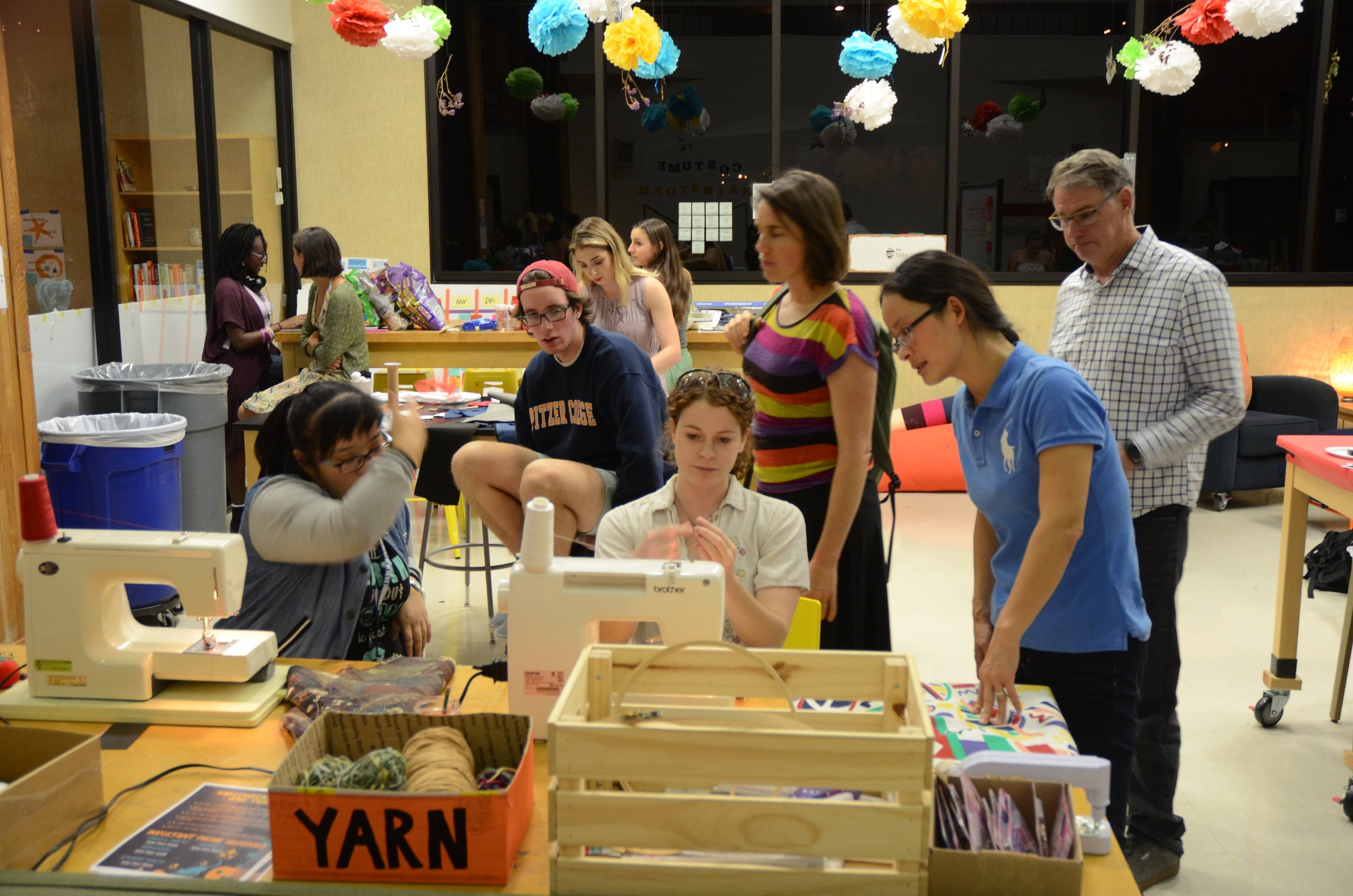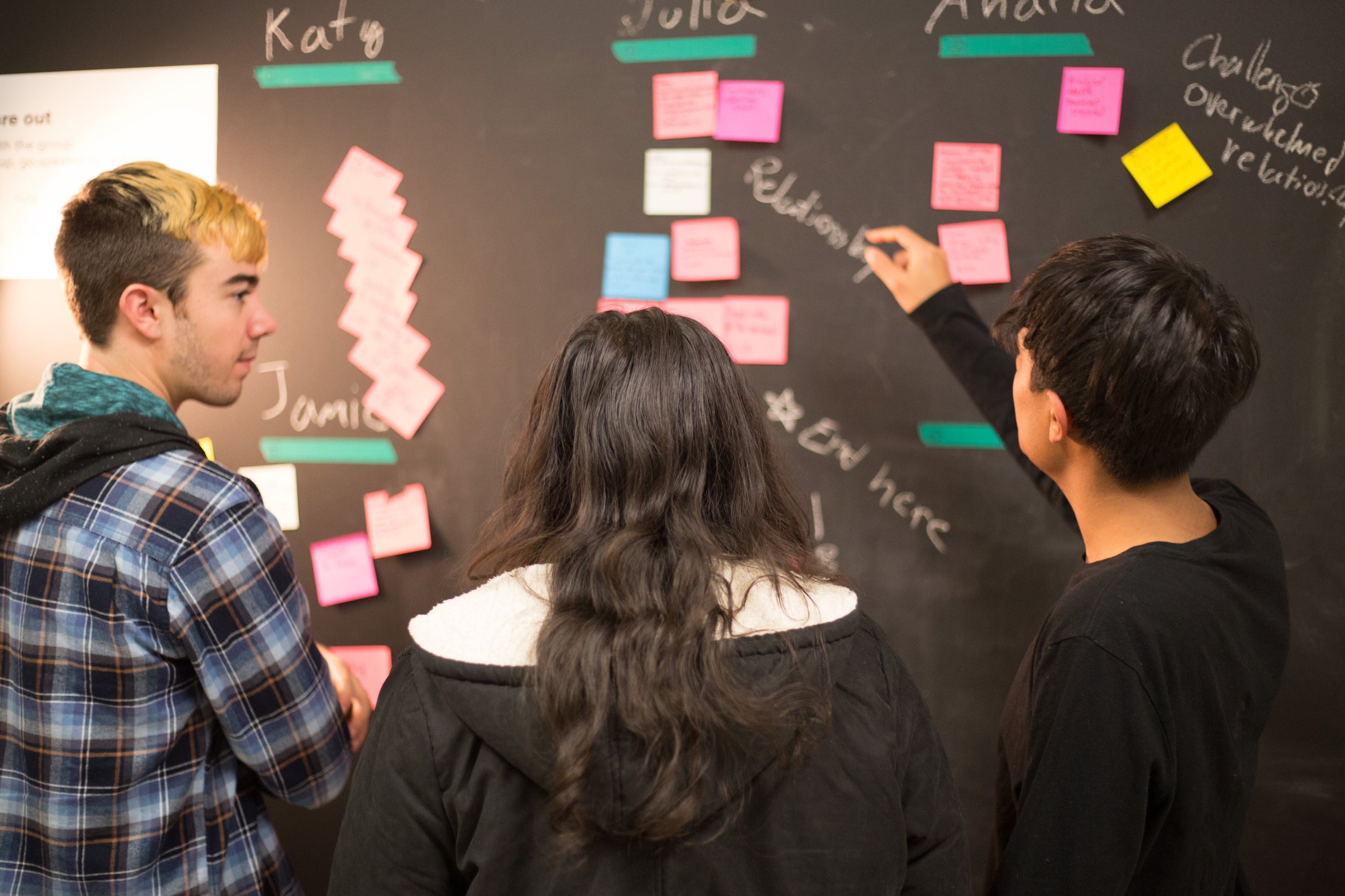The Hive at the Claremont Colleges
The Rick and Susan Sontag Center for Collaborative Creativity, which is known informally as the Hive, works to accelerate the creative capacity of students, faculty and staff across the five undergraduate schools that make up the Claremont Colleges (Harvey Mudd College, Pitzer College, Claremont McKenna College, Pomona College, and Scripps College). This center was built upon a strong foundation of ethnographic research that supported this idea of bringing more experiential learning, collaboration and exploration to the students in the form of both curricular and co-curricular activities.
Starting as a Post-Baccalaureate Associate in 2016 and then getting promoted to a Learning Experience Designer in 2017, my two years at the Hive were dedicated to course design and creating student-centric active learning experiences that reflect the diverse array of perspectives these campuses offered.
Learning Experience Design
We live in an age of infinite distraction and societal disorder. Students expect more engaging and hands-on learning modules than ever before. Plus, the work that is being done both in the classroom and outside of it has be truly meaningful, topical, and applicable to the world that exists beyond the college campus. After observing this shift in pedagogy, my objective became clear: create scenarios where students can have open conversations about the persisting problems facing humanity that then lead to workshopping impactful and sustainable solutions.
Over the course of the 2016/2017 school year, we built out several new programs that activated the students and directed them toward uncovering human truths and the deep-seated issues their users have. As the Learning Experience Designer, I worked closely with students before, during, and after the experience or event to get a better understanding of what tools and activities are needed to be facilitated. Frequently, I had to create entirely new lesson plans that helped advance the student’s research, synthesis, ideation, or implementation. I found myself designing curriculum where the duration ranged significantly. Smaller undertakings would include things like “pick-up projects” or “mini-workshops.” Experiences that were more of a commitment for the students included the Los Angeles Cleantech Incubator Makership or our semester-long Human-Centered Design engineering course.
Scope of activities at the Hive:
When creating an experiential learning opportunity, I first think about the desired outcomes and then the specific behaviors that learners might need to exhibit in order to achieve said outcomes. I’d collaborate with students, staffers and faculty to answer questions like “what senses need to be engaged?”, “what skills need practicing?”, or “what resources need to be made public?” Inspired from my work at the Hasso Plattner Institute of Design at Stanford University, I’d frequently take this empathetic approach and see that the coursework is aligned with what the value and need.
Not all of the lesson plans, learning modules or workshops were a complete success. There would often be tension between the students and the professor I’d be supporting. For example, I’d hear from the students that there should be more structure or transparency but the professor is telling me the curriculum, and the lesson plans give too much instruction and should be more ambiguous. Creating those learning experiences that have attainable deliverables but still allow for creativity and open-endedness continues to be an objective of mine as I exercise my skills as a coach and designer of learning opportunities in higher education and industry.
Lose Your Shoes - Large-Scale Marketing Event
Visual Thinking Strategies - Pop-Up Classes
The Human Loon Migration - Workshop
Design Thinking and Social Creativity - Workshop Series
Quantitative Data 2016-2018
Teaching and Facilitation
Learning experience design and teaching/facilitation are closely related. Many of the learning opportunities I’ve designed in the past four years would not have been successful without the insights I’ve gotten from taking on the perspective of one who stands in front of a group of people and provides instruction. Therefore, teaching has been a vital part of the learning experience design process for me. Having empathy for not just the students but also for the instructors has led to break-throughs in how I transform students from passive learners into active learners.
Having first gained experience with facilitating and observing workshops at James Madison University, I began to develop an eye for events and workshops that truly satisfied and maintained a student’s sense of curiosity. This ability to critique and identify enthralling learning experiences helped me engage in conversations with professors, administrators and industry leaders that were seeking to improve the curriculums or services they were hoping to provide.













Insights from Teaching
Engage from the beginning.
Students contribute more throughout the class if they are activated with music, a relevant challenge or warm-up activity the moment they walk in the door.
Collaboration can help create shared understanding.
Creating opportunities for the students to collaborate and learn from each other can help equalize the varying levels of understanding present in the room.
Dedicate class time to skill-based learning.
Now, more than ever, students want projects that gets them closer to the real thing and practicing useful skills. Having students tackle real problems promotes intrinsic motivation. Purely teaching through textbooks and projects based in theory don’t produce 21st century learners.
Provide tools for both the introverts and the extroverts to succeed.
You can account for the different types of learners and personalities by providing tools, like a sketchbook or post-its, for individuals to collect their thoughts in before a class discussion or debrief.
Lectures are still needed.
A good lecture is not out-of-date as long as its relevant, purposeful and inspiring (some humor isn’t bad either). Just make sure you’re not lecturing every class.
Be yourself!
Students won’t authentically contribute and give candid feedback if you’re always talking at them and not being yourself. Find ways to get on their level and facilitate activities that allow for everyone present, including yourself, to talk openly. This one comes from my friend, Justin Ferrell (thank you for this simple but powerful advice).
Testimonials
“Learning from and being coached by Tim has been one of the most enriching experiences I have had. He brings his enthusiasm, his endless curiosity, and a passion to help you get to where you want to go. His goal had always been for me to be the driving force, and for him to be there as a guide and support as I needed it. It was so natural these past two years that I just recently realized his intention, to get me to a point where I didn’t need him anymore.”
— Kian Etedali, Engineering Student, Pitzer College
“Here at the Hive— at the intersection of liberal arts disciplines, maker culture, and creative expression— we must wear a variety of hats. Tim adorns each one with style and grace. His ability to positively and insightfully move between the role of mentor, facilitator, designer, and ambassador has been invaluable in developing a foundation for the Hive here at the Claremont Colleges. It has been a delight and honor to work with him.”
— Kareem Collie, Director of Design and Creativity, The Hive
“Tim Moore’s gift as a creative collaborator is to bring joy, spontaneity and inclusiveness to all he’s involved with. His energy is contagious and constantly moves people in the direction of their own passions and deep creative drives.”
















